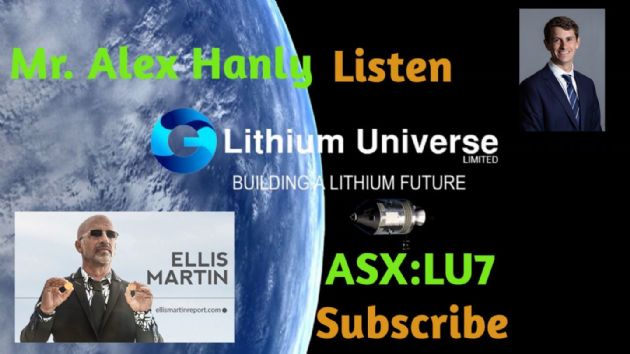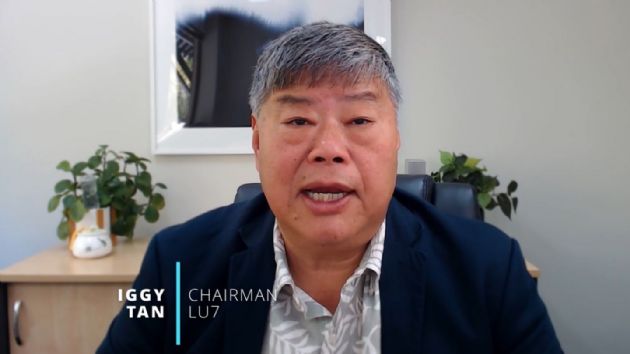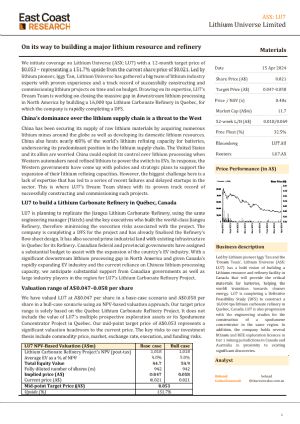 Strategic Update - Closing the Lithium Conversion Gap
Strategic Update - Closing the Lithium Conversion Gap
Melbourne, April 8, 2024 AEST (ABN Newswire) - Lithium Universe Ltd ( ASX:LU7) (
ASX:LU7) ( ESMAF:OTCMKTS) provides a strategic update on addressing the gap in lithium conversion capacity and enhancing the North American supply chain.
ESMAF:OTCMKTS) provides a strategic update on addressing the gap in lithium conversion capacity and enhancing the North American supply chain.
What is the 'Lithium Gap'?
North America anticipates a surge in battery manufacturing, with over 20 major manufacturers planning to deploy an estimated 1,000GW of battery capacity. Canada has ascended to the top spot in Bloomberg NEF's Global Lithium-Ion Battery Supply Chain Ranking, signalling its emergence as a significant global supplier of battery materials. However, bridging the gap between the growing supply of lithium ore and the increasing demand for highly processed lithium carbonate remains a challenge and opportunity.
Lithium Universe is advancing a mine-to-battery-grade lithium carbonate strategy in Canada through the Quebec Lithium Processing Hub (QLPH). The QLPH includes a multi-purpose independent 1 Mtpa concentrator and an independent 16,000 tpa battery-grade lithium carbonate refinery.
Over the past decade, numerous lithium conversion plants worldwide have encountered technical and startup challenges. Even established lithium producers have found lithium conversion to be a challenging task. Lithium Universe presents a solution to mitigate these risks. The company has formed a team, dubbed the Lithium Dream Team, comprising experts in hard rock lithium extraction and downstream conversion operations.
Additionally, strategic partnerships with engineering consultants Hatch Ltd and Primero Group have been forged.
By leveraging proven technology in spodumene concentration and lithium conversion design, the company aims to minimize execution risk. Notably, the Dream Team previously spearheaded the successful construction of the Jiangsu Lithium Carbonate facility, surpassing design expectations to produce the world's premier battery-grade carbonate. This project was built by Hatch Ltd. Lithium Universe intends to replicate the design and operational methodologies implemented at Jiangsu, viewing this, coupled with the expertise of the Dream Team, as pivotal in establishing conversion capacity in North America.
The Emerging James Bay Supply
The Company has engaged with numerous exploration entities operating within the region of James Bay, Quebec and estimate there are over 40 companies dedicated to lithium exploration in the area. Our assessments indicate a cumulative lithium resource exceeding 500Mt at +1% Li2O across eight distinct projects, which has increased over 100% within the last 12 months. This significant increase is due to the upgraded resource of 110.2Mt at 1.3% Li2O by Arcadium Lithium at the James Bay Project, the maiden resource of Patriot Battery Metals at Corvette of 109Mt at 1.42% Li2O and most recently the announcement of Winsome Resource's 59Mt at 1.12% Li2O resource at their Adina Project.
Despite these advancements, the James Bay region remains relatively underexplored compared to more established lithium industries, such as those in Western Australia. We anticipate continued globally significant discoveries and resource upgrades in the region in the years ahead. The genuine prospectivity of James Bay, combined with its active exploration scene, presents a promising supply opportunity for our company's proposed lithium carbonate refinery.
The Scale of the Lithium Conversion Gap
With strong planned demand in the United States and a burgeoning spodumene mine supply in Quebec and Ontario, the issue lies in the scarcity of independent lithium converters planned for construction in North America, potentially stemming from a lack of expertise or a series of recent failures in the sector. A significant gap in lithium conversion and processing looms in North America. Assuming the planned battery manufacturing capacity of 1,000 GW by 2028, using a ratio of 850g lithium carbonate equivalent (LCE) per KWh, the Company estimates that 850,000t of LCE per annum will be required to satisfy demand in North America. Currently, there are no operational converters in North America and the Company estimates approximately only 100,000t of planned hard rock converters are slated for construction in the region. The Lithium Universe strategy is to bridge this gap by leveraging a proven track record in constructing such converters.
LU7 Business Model
Multiple original equipment manufacturers (OEMs) have secured spodumene supply contracts from mines globally to ensure a steady provision of lithium chemicals for their cathode/battery plants. If these OEMs are in the automotive sector, the batteries are intended for their proposed electric vehicle (EV) facilities in Europe and North America. However, a challenge arises as they need to convert this spodumene supply in China before shipping the lithium units to their supply chains in Europe and America. This poses a significant hurdle in establishing a dependable supply chain, particularly due to limited lithium converters in North America.
The region aims to reduce reliance on Chinese suppliers, aligning with both commercial and national security objectives. The business model of Lithium Universe is straightforward: the company will seek to convert essential spodumene supply for these OEMs in North America and ensure the availability of critical units for the North American supply chain. Pricing are likely to be based on "take or pay" agreements with the OEMs, incorporating certain risk-reducing mechanisms such as floor and ceiling prices to protect Lithium Universe. As long as there's an established margin to guarantee LU7 refinery's payback, the OEMs gain assurance and sustainability in conversion supply without LU7 being exposed to price and market volatility risks. This arrangement presents a win-win scenario, and discussions with potential offtake partners have already commenced.
Focused on Quebec due to its proximity to the promising hard rock lithium region of James Bay and direct port access to the Atlantic Ocean, the Company has announced an option agreement to acquire a commercial property within the Becancour Waterfront Industrial Park (BWIP) as a crucial step toward its goal.
Despite prevailing lithium market dynamics, Lithium Universe remains committed to building through lithium market cycles and addressing the North American lithium conversion deficit with the QLPH Lithium Carbonate Refinery.
Canada as the next emerging battery supply chain
Canada has surpassed China to claim the top spot in Bloomberg NEF's Global Lithium-Ion Battery Supply Chain Ranking, a comprehensive annual evaluation of 30 countries' potential to develop secure, reliable, and sustainable lithium-ion battery supply chains. This marks a significant milestone as it's the first time China has been displaced from the number one position. Canada's consistent advancements in manufacturing and production, coupled with robust ESG credentials, have positioned it as a frontrunner in shaping the future of battery supply chains. Additionally, Canada's close integration with the US automotive sector has further bolstered its standing, particularly benefiting from the 'friendshoring' goals outlined in the Inflation Reduction Act.
The country's high ranking is driven by dedicated policy commitments at both provincial and federal levels. While China retains a strong foothold in the established supply chain, the growing emphasis on sustainability underscores the significant opportunity within Canada. Lithium Universe's focus on Quebec and the broader North American region is not only due to the favourable operating environment but also the significant opportunity presented within the supply and demand dynamics emerging in the region.
LFPs Becoming the Battery of Choice
The Company's emphasis on constructing a lithium carbonate refinery is rooted in the expertise of key executives from Lithium Universe, who spearheaded the successful development of the Jiangsu Refinery. This decision is further supported by the significant investment potential driven by the rising demand for LFP batteries, where lithium carbonate serves as the required lithium chemical precursor.
Lithium Iron Phosphate (LFP) batteries are poised to dominate the global battery market, encompassing electric vehicles (EVs), energy storage systems (ESSs), and consumer electronics (CEs), with a projected 48% market share by 2033, according to analysts at Fastmarkets. Renowned for their stability, safety, and cost-effectiveness despite relatively lower energy density compared to Nickel Cobalt Manganese (NCM) batteries, LFP batteries currently reign supreme in China's domestic EV market, accounting for over 67% of installations in 2023.
While LFP adoption outside of China is growing, its advantages over NCM batteries position it favourably as economies worldwide push for EV and ESS adoption to drive the energy transition. With its cathode material reliant on lithium carbonate and iron phosphate, LFP is particularly vital in large-scale energy storage applications. Experts foresee substantial growth in the ESS market, with LFP batteries expected to capture 87% of the market share by 2033, driven by their affordability and reliability. Furthermore, LFP's are anticipated to expand rapidly in the passenger EV sector, reaching a 43% market share by 2033, though NCM will remain dominant due to OEM preferences in the US and Europe. However, the trend is shifting, with more OEMs incorporating LFP cathodes.
The Company estimates that over 90% of worldwide LFP manufacturing is currently hosted in China. Now, there is a consistent trend in North America; Ford plans to build a $3.5 billion factory in Marshall, Michigan, which will produce 35 gigawatt-hours of LFP cells annually for electric vehicles starting in 2026. Tesla have announced a research-sized facility in Sparks, Nevada, with a capacity of 10 gigawatt-hours of LFP cells per annum to investigate improvements to faster charging and high energy density. LG Energy Solutions have invested $5.6 billion within Arizona on a dual-purpose facility manufacturing LFPs for ESS and cylindrical batteries for EVs.
Onshoring the Supply Chain
The industry encounters a significant challenge in establishing a reliable supply chain, especially due to limited access to lithium converters in North America. The region seeks to decrease dependence on Chinese companies, aligning with both commercial and national security goals. Currently, Chinese firms hold a commanding position in the global lithium converter and refining market. Our company estimates that over 95% of the world's spodumene conversion capacity is located in China.
Similarly, Canada, acknowledging the significance of energy security, has intensified efforts to reduce Chinese involvement in the sector as part of a "decoupling" or "de-risking" strategy, mirroring the actions taken by the United States. In November 2022, following a national security review, the Canadian government mandated the divestment of Sinomine (Hong Kong) Rare Metals Resources, Chengze Lithium International Ltd., and Zangge Mining Investment from Canadian critical minerals companies, transitioning from words to decisive actions. The prevailing trend towards supply chain localization presents a significant opportunity for Lithium Universe to leverage.
Proactive Government Support
Canada's Critical Minerals Strategy, unveiled in December 2022, outlines Canada's commitment to becoming the premier global supplier of critical minerals for green technologies. With C$3.8 billion in funding allocated, the strategy aims to reduce reliance on foreign mineral inputs. Budget 2022 introduced the Canada Growth Fund (CGF), a $15 billion initiative facilitating private sector investment in Canadian businesses and projects. The aim is to expedite and amplify Canada's economic growth while transitioning towards a net-zero future. Projects eligible for funding will be assessed based on their Canadian presence, intellectual property development, and contribution to value chain creation, with a focus on strengthening critical supply chains.
Quebec's provincial government is similarly dedicated, offering tailored support, and streamlining processes to bolster the critical minerals sector locally. Investissement Quebec is the most sophisticated provincial funding body in Canada. LU7's engagement with the Quebec Government, involving key figures such as the Minister of Economics, Innovation, and Energy, Pierre Fitzgibbon, and Hubert Bolduc from Investissement Quebec International, underscored its proactive approach in aligning its operations with regional priorities. This meeting highlighted LU7's team, expertise, and the QLPH strategy, reinforcing its vision to be at the forefront of the region's critical minerals strategy.
Lithium battery supply chain development has a strong recent history of provincial and federal government support and attractive operational incentives for delivery of critical minerals supply chain solutions. Recent government involvement extends to the General Motors (GM) and Korea-based POSCO Chemicals' US$1 billion cathode active material (CAM) factory, the Ford/EcoPro BM US$800 million cathode factory in addition to the Northvolt's EV US$7 billion Battery Facility at Saint-Basile-le-Grand, placing the Company's project in a favourable regulatory environment.
North American Battery Surge
North America is set to witness a substantial surge in battery manufacturing, with over 20 major battery manufacturers planning to deploy an estimated 1,000GW of battery capacity by 2028. By 2030, Georgia, Kentucky, and Michigan in addition to other states are poised to dominate electric vehicle (EV) battery production in the United States. These states aim to collectively manufacture between 97 and 136 gigawatt hours of EV batteries annually. To meet the escalating demand for EVs, it is estimated that North America's EV battery manufacturing capacity will skyrocket from 92 gigawatt-hours in 2022 to nearly 1,000 gigawatt-hours by 2028.
This strategic expansion is expected to support the production of 10 to 13 million all-electric vehicles annually by 2028, positioning the U.S. as a formidable global EV competitor. Additionally, Canada's recent focus on investing in battery plants, backed by collaborations with Volkswagen, Stellantis, LG Energy Solution, and Northvolt, aims to safeguard its auto sector.
Lithium Universe Chairman, Iggy Tan said "Despite prevailing lithium market dynamics, Lithium Universe remains committed to building through the lithium market cycle, solidifying its pivotal role within the growing lithium supply chain in North America.
Leveraging strong tailwinds from the geopolitical shift towards onshoring battery production, the emergence of James Bay as a key lithium jurisdiction, and our strategic approach to addressing the lithium conversion capacity gap, we stand in a favourable position."
*To view tables and figures, please visit:
https://abnnewswire.net/lnk/S96G0P57
About Lithium Universe Ltd
 Lithium Universe Ltd (ASX:LU7) (FRA:KU00) (OTCMKTS:LUVSF) is a forward-thinking company on a mission to close the "Lithium Conversion Gap" in North America and revolutionize the photovoltaic (PV) solar panel recycling sector. The company is dedicated to securing the future of green energy by addressing two major strategic initiatives: the development of a green, battery-grade lithium carbonate refinery in Quebec, Canada, and pioneering the recycling of valuable metals, including silver, from discarded solar panels.
Lithium Universe Ltd (ASX:LU7) (FRA:KU00) (OTCMKTS:LUVSF) is a forward-thinking company on a mission to close the "Lithium Conversion Gap" in North America and revolutionize the photovoltaic (PV) solar panel recycling sector. The company is dedicated to securing the future of green energy by addressing two major strategic initiatives: the development of a green, battery-grade lithium carbonate refinery in Quebec, Canada, and pioneering the recycling of valuable metals, including silver, from discarded solar panels.



![abnnewswire.com]()
Related Companies
Social Media
Share this Article

 ASX:LU7) (
ASX:LU7) ( ESMAF:OTCMKTS) provides a strategic update on addressing the gap in lithium conversion capacity and enhancing the North American supply chain.
ESMAF:OTCMKTS) provides a strategic update on addressing the gap in lithium conversion capacity and enhancing the North American supply chain.  Lithium Universe Ltd (ASX:LU7) (FRA:KU00) (OTCMKTS:LUVSF) is a forward-thinking company on a mission to close the "Lithium Conversion Gap" in North America and revolutionize the photovoltaic (PV) solar panel recycling sector. The company is dedicated to securing the future of green energy by addressing two major strategic initiatives: the development of a green, battery-grade lithium carbonate refinery in Quebec, Canada, and pioneering the recycling of valuable metals, including silver, from discarded solar panels.
Lithium Universe Ltd (ASX:LU7) (FRA:KU00) (OTCMKTS:LUVSF) is a forward-thinking company on a mission to close the "Lithium Conversion Gap" in North America and revolutionize the photovoltaic (PV) solar panel recycling sector. The company is dedicated to securing the future of green energy by addressing two major strategic initiatives: the development of a green, battery-grade lithium carbonate refinery in Quebec, Canada, and pioneering the recycling of valuable metals, including silver, from discarded solar panels.











